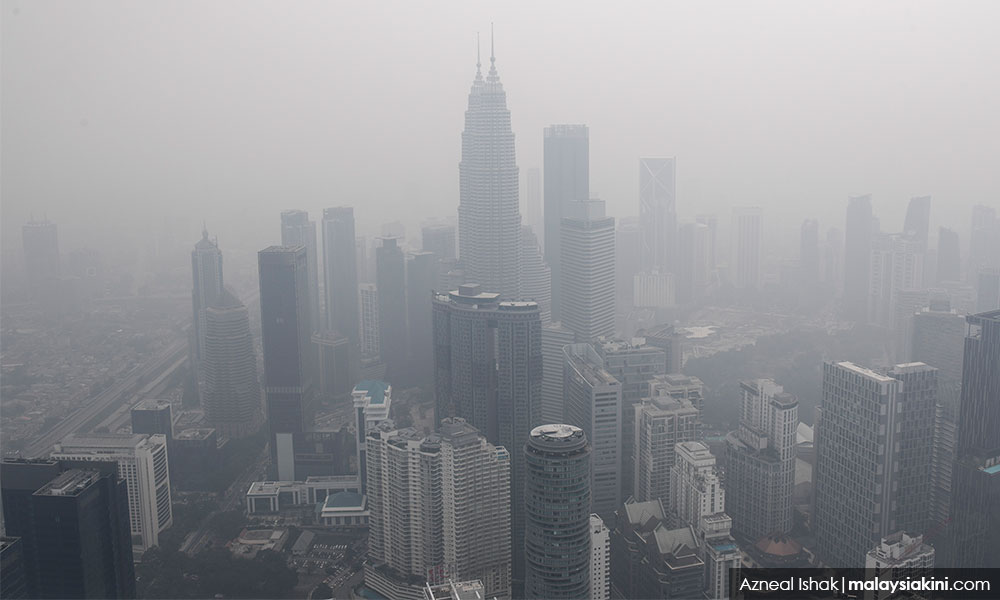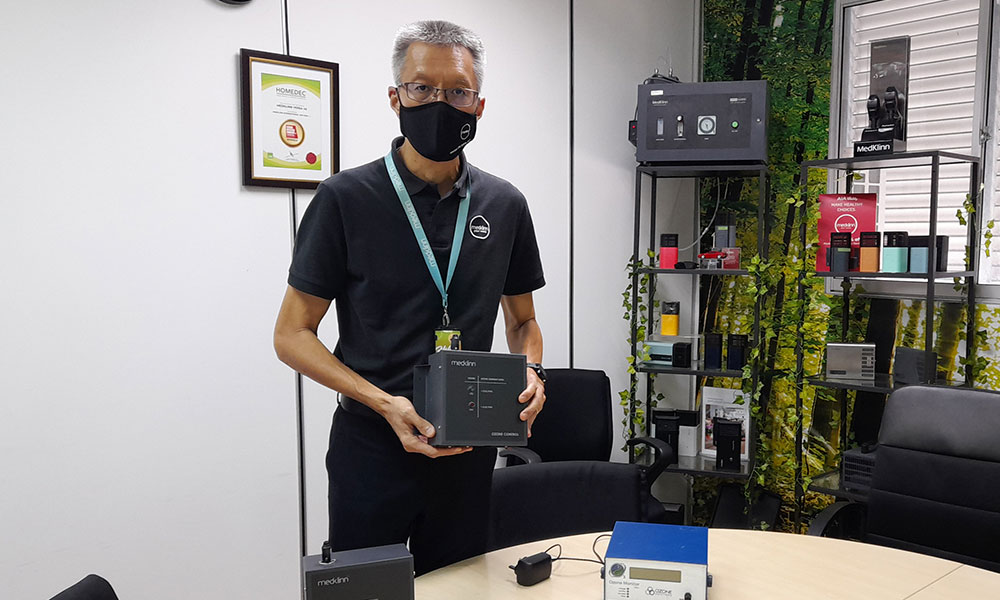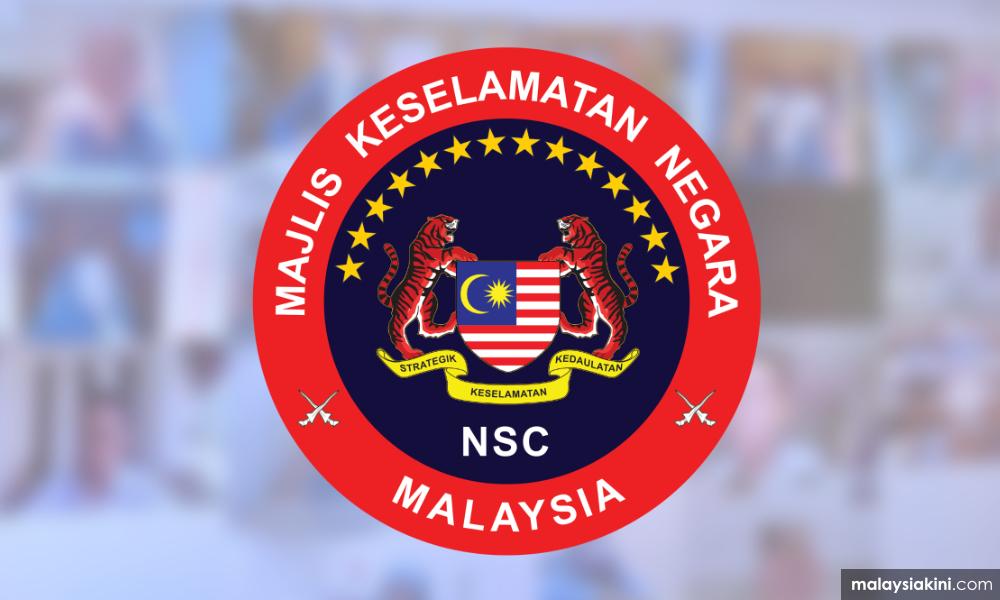An indoor air quality (IAQ) expert has warned businesses and consumers against using ‘air purifiers’ that emit ozone as a byproduct, which are touted to have the ability to kill germs that may be present in the air.
Ozone gas plays a crucial role in the upper atmosphere by filtering out much of the sun’s UV radiation.
But on the ground, International Islamic University of Malaysia (IIUM) assistant professor Maryam Zahaba (above) said its highly reactive nature makes ozone hazardous to humans.
It can also react with other common substances to produce more pollutants.
“When we inhale (these air pollutants), it can oxidise inside our lungs. Humans can become sick or experience shortness of breath,” Maryam told Malaysiakini when contacted.
Thus, she said, consumers and businesses must understand the air cleaning systems that they buy and ensure that they do not emit ozone gas.
High ozone levels in supermarkets, karaoke centres
Maryam’s warning comes after a netizen claimed to have found excessive ozone levels at several business premises, which he linked to the use of a popular brand of air purifiers that are marketed to supposedly have additional ability to sterilise - not just filter - the air.
It started when Gilbert von der Aue noticed a distinct smell at a business premise and returned to check with an air quality monitor he brought from his workplace and shared his findings on social media.
Aue is managing director at Melchers Malaysia – an engineering firm that, among other things, provides Indoor Air Quality-related services.
“Ozone is very distinct. It smells crisp and fresh – but many don’t realise they are breathing in a form of poison.
“If you can smell it, the levels are enough to cause damage. Ozone kills. So, we wanted to measure the levels and, as expected, they were higher than the Department of Occupational Safety and Health’s (Dosh) limits; at times more than two times higher,” he told Malaysiakini.
Dosh’s limit for indoor ozone is 0.05 parts per million (ppm) averaged over eight hours.
Aue’s measurements, while brief, found a supermarket with an ozone reading of 0.15ppm and another with 0.08ppm.
One café had a reading of 0.16ppm, while a karaoke centre had a reading of 0.23ppm.
Businesses care, but lack the knowhow
Quoting the US Environmental Protection Agency (EPA), Aue explained that ozone can damage lungs when inhaled.
A relatively low amount can cause chest pain, coughing, shortness of breath and throat irritation.
It can also worsen chronic respiratory diseases such as asthma and compromise the body’s ability to fight respiratory infections.

Apart from ozone generators being sold as air purifiers, Aue said a plasma air purifier can generate ozone too, as a byproduct of its electrical discharge process.
Aue said he had shown the measurement to some of the businesses, which responded by shutting down the system immediately.
“Business owners care and have been very appreciative, and there are ways to check. But many are not aware how to check and I suggested to them to read up more about the technologies they are investing in,” he said.
Malaysiakini has contacted several of the businesses named by Aue, including the seller of the ozone-producing air purifiers, and is withholding some of their names pending their responses.
MedKlinn counters toxicity claims
MedKlinn Malaysia, the company selling ozone-producing air sterilisation systems, clarified that its products produce a controlled amount of ozone that is both effective in cleaning air pollutants and safe within Dosh’s limit.
Its managing director Peter Tham and chief-operating-officer Daniel Lu said MedKlinn customises its air sterilisation system to each of its clients depending on various factors, including size and operational hours.
“All our models are calibrated for a certain size and space, that is where we are able to maintain the concentration level of 0.05ppm.
“Every one of our models is certified for the coverage area. It is customised for their operation.
“We don’t sell the same type of product to everybody and they all have the same settings,” the company told Malaysiakini.
Lu explained that each of MedKlinn’s air sterilisation systems also come with a timer and an ozone sensor to detect the level of ozone in the system’s surroundings.
“If (the ozone level) is above 0.05ppm, the system cuts off, if it is below, the system kicks in,” he said.
Lu added that it is not fair to simply make a conclusion from a single point measurement when Dosh’s limit of 0.05ppm is a time-weighted average (TWA) limit over a period of eight hours.
“You cannot just take one data, at one spot, and make a claim. That is not how TWA is measured, it is not a representative measurement.
“To measure 0.05ppm, you need specialised equipment. That equipment itself can cost you RM20,000 to RM30,000 and it only measures ozone.
“He’s using equipment that can measure all kinds of gases, so the accuracy needs to be verified as well,” Lu said in response to Aue’s claims.

Founded in 2005, MedKlinn claims all of its products are compliant with European and international standards.
MedKlinn blamed the misconceptions about its products on lack of understanding over its product safety, while also accusing the United States EPA of confusing the public when it comes to the definition of ozone.
“The EPA, unfortunately, confuses the public by defining smog as ground-level ozone. The ozone that the EPA is talking about, ground-level ozone, is a chemical reaction between different sources.
“But because ground-level ozone and ozone are used interchangeably, people get confused,” the company claimed.
For the record, apart from smog and ground-level ozone, the EPA has also specifically warned against using ozone generators that are being sold as air cleaners.
Its website states: “If used at concentrations that do not exceed public health standards, ozone applied to indoor air does not effectively remove viruses, bacteria, mould, or other biological pollutants.”
MedKlinn acknowledged EPA’s warning on using ozone generators as air purifiers, but distanced itself from other ozone generators in the market.
“Between an ozone generator and our Cerafusion technology, ozone generators are not meant to run with human presence, they’re not meant to run 24/7, and they are not compliant with international standards.
“Whereas in MedKlinn’s Cerafusion technology, we designed with the intention to run 24/7 and with human presence.
“The fundamental principle of our designed technology is very different from ozone generators, nobody has produced what we are producing because that is part of our patent,” Lu said.
Fresh air is best
Meanwhile, Maryam said the best way to maintain indoor air quality is to let in fresh air whenever practical, rather than to rely on an air purifier.
“However, air purifiers may be needed, depending on the locality of your house or areas.
“Let's say your house is located near an industrial area and you can’t open the window, of course, air purifiers can be a strategy,” Maryam said.
For larger premises such as supermarkets, Maryam said such places are usually equipped with mechanical ventilation and air conditioning (MVAC) systems and can control the amount of fresh air flowing into their premises.
Under Dosh’s Covid-19 air quality guidelines, it is advisable for a building to open its outdoor air dampers to 100 percent to maximise the amount of fresh air flowing into the building.

The National Security Council’s (NSC) Covid-19 standard operating procedures make it compulsory to maintain good indoor air quality (IAQ) in accordance with Dosh’s guidelines.
“So, first you need to amplify your MVAC system. Can you then introduce (enough) fresh air? If not, then you need to think of other strategies.
“You can use an ozone generator, but it can only be used when there are no occupants in your building at all,” Maryam said.
Nevertheless, she still discourages businesses and consumers from using ozone generators and air purifiers that can emit ozone, especially air purifiers.
“There are pros and cons when it comes to ozone generators, but air purifiers emitting ozone? I do not recommend it at all,” she said.
Premises owners can be penalised
When contacted, Dosh director Zailee Dollah said the department does not regulate any ozone generator or air purifier on the market as this is beyond the department’s jurisdiction.
However, he told Malaysiakini that businesses must still follow manufacturers’ instructions to ensure such systems are installed and used properly, and account for the risks they may pose to people.
Zailee said that workplaces equipped with MVAC systems are bound by the department’s Industry Code of Practice on Indoor Air Quality 2010 (ICOP IAQ 2010), which imposes the 0.05ppm maximum acceptable limit for ozone.
“Basically, for any workplace stated in ICOP IAQ 2010, action can be taken against it under the Occupational Health and Safety Act 1994 if there is any non-compliance with the ICOP,” he said in a statement to Malaysiakini.
Based on the ICOP IAQ 2010, Dosh has also developed guidelines for mitigating the risk of airborne transmission of Covid-19 in July, which has since been adopted by the NSC as part of Malaysia’s Covid-19 SOPs.
“Thus, it is mandatory for each of those settings mentioned in the guidelines to follow it,” Zailee said.
Dosh has four sets of Covid-19 IAQ guidelines each for a different setting, namely – residential settings, non-residential settings, public areas and healthcare facilities. - Mkini



No comments:
Post a Comment
Note: Only a member of this blog may post a comment.